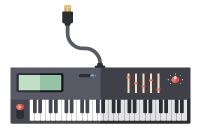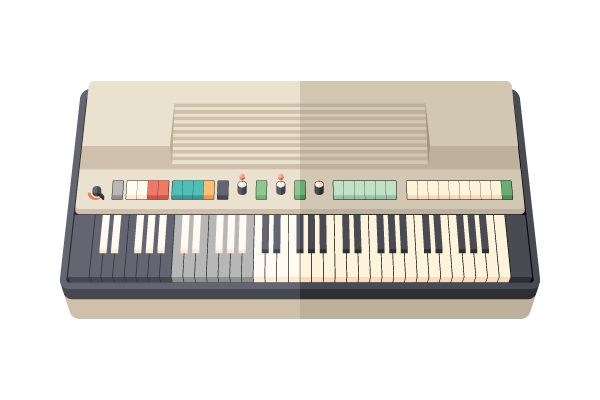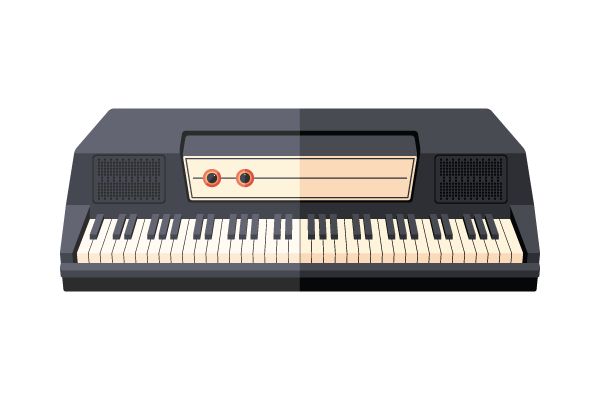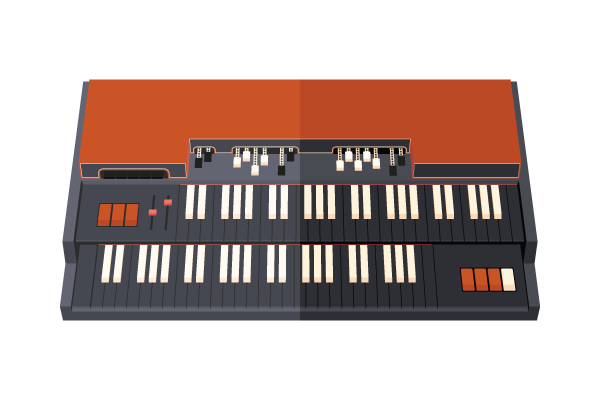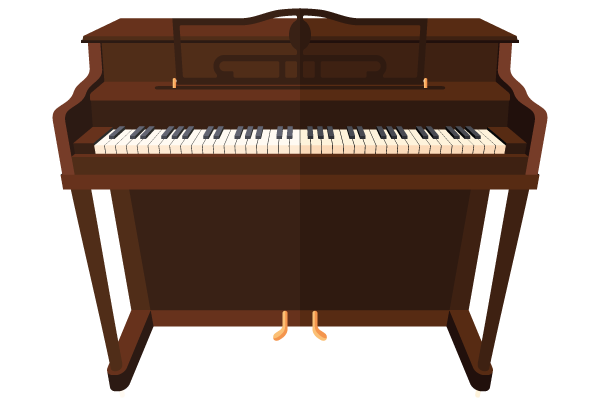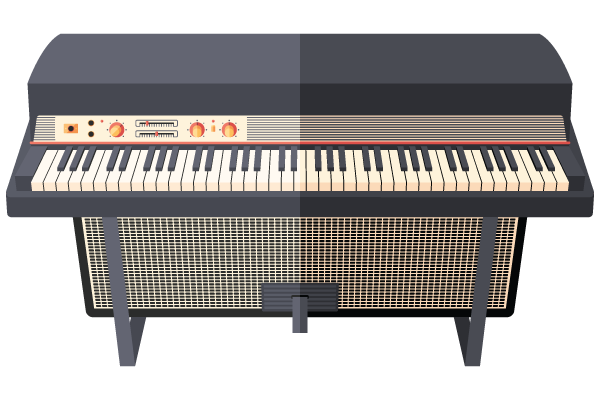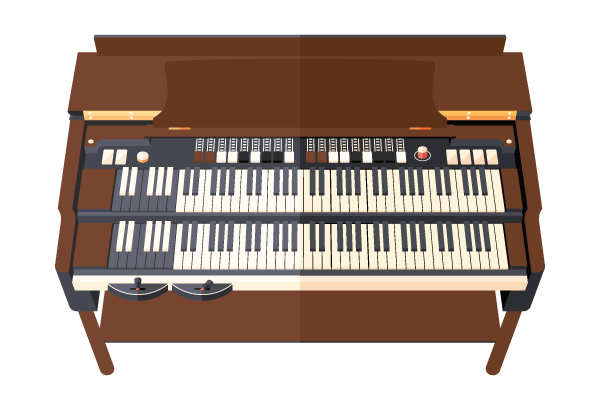What is a Scale in Music?
For some reason unknown to us, practicing scales or even just the word “scales” seems to fill musicians with as much fear and existential dread as public speaking or doing taxes.
Scales are fun and amazing devices of science, math, sound, and expression.
A scale, by definition, is a sequence of musical notes arranged according to a specific formula. This formula can begin on any of the 12 tones in the Western musical alphabet, to produce the scale that corresponds with that note.
Some common scales you may already have heard of are major, minor, and pentatonic or “blues”. There are plenty of different scales to explore, and in this article, we’re going to give you a solid foundation to go out and explore scales in your own musical journey.
Why Should You Learn Musical Scales?
Scales are the true building block of all melody and harmony. Chords, which are used to write songs, come from scales. Melodies also come from scales. Learning scales isn’t only an asset to any aspiring theory head, but also an invaluable tool in the creative process.
When it comes to writing and producing, scale theory won’t substitute true inspiration, but it will certainly help expand your horizons, and give you a valuable “get out of jail free” card if you ever find yourself stuck with a musical problem, writer's block, or are having difficulty understanding a new concept on your instrument.
Scales are also just downright cool. By the end of this article, you’ll have enough knowledge to backflip off the diving board into the deep end and start experimenting with some really mind-bending musical concepts.
What Are The Most Common Types of Musical Scales
Before we learn the four most common musical scales, we need a few building blocks- Musical scales are formed by applying a formula of whole and half steps to a starting pitch or “tonic” note.
Whole steps are the distance of two notes (two piano keys or frets on the guitar), while half steps are the distance of one-note (one piano key or one fret on the guitar). Two half steps = one whole step. Whole steps and half steps can also be called “whole tones” and “semitones”.
If you need to brush up on your knowledge of basic theory or want to dive a little deeper at any point in the article, you can learn and review more music theory basics here.
The Major Scale
The major scale is considered home base when it comes to music theory. We use this most basic scale as a foundation for forming other scales, and when discussing music theory as a whole.
The major scale is formed by choosing a starting note and then applying this formula.
W = whole step H = half step
W W H W W W H

“C” major is most often used as an example because it contains no sharp or flat notes (called accidentals).
The Minor Scales
If we take the major scale and lower the 3rd, 6th, and 7th notes we create the minor scale.
Another way to look at this is by using this formula of whole and half steps.
W H W W H W W
The minor scale has a “darker” quality than the major scale, due to the smaller spaces between notes. It feels more compressed and moody and is great for scoring drama or writing introspective music.
There are two other minor scales that come from the classical tradition, which are still used in music today. These are called “harmonic” minor and “melodic” minor.
A harmonic minor scale is a minor scale with a natural 7th scale degree. In other words, the 3rd and 6th notes are lowered, but the 7th note stays the same as it is in the major scale. This scale instantly screams “classical” music. It is incredibly common in Baroque music, and also in Eastern (Asian and European) music. The harmonic minor scale was first used as a way to create a smooth sound when ascending through a minor scale. When composers would descend, they would lower the 7th, as a return to the normal or natural minor scale.
Since then, the harmonic minor scale has evolved to stand on its own, being used in many popular songs and as an improvisational tool.
Harmonic minor example: Billie Eilish - Bury a Friend
In addition to the natural and harmonic minor scales, there is also a scale called “Melodic” minor. This scale follows the same formula as the natural minor scale, with the exception of the 6th note. Instead of a flattened 6th, the 6th remains natural, just like in the major scale.
Melodic minor was also used as a way to create smooth melodies by ascending and descending according to different formulas. In modern music, it’s not uncommon for an instrumentalist to improvise using this scale on its own, most commonly in jazz.
The Beatles’ “Yesterday” is a great example of a pop melody that uses the melodic minor scale.
You’ll find these scales under the "diatonic modes" section in the top-left part of the tool.
Although most scales in Western music are made up of seven notes, this isn’t the only way to do things! Many other musical systems exist in the world and produce scales that are five, six, or even eight notes. There are also “microtonal” scales in Indian Classical music, as well as scales that change their formula when ascending or descending through the scale.
The Pentatonic Scales
This next scale, called the pentatonic scale, is used often in Southeast Asian and Chinese classical music. It is a five-note scale, hence its name “penta” (five) “tonic” (tone).
In contemporary music, the pentatonic scale is most typically associated with blues and later rock music. Many guitarists first learn this scale as an easy way to improvise and begin creating solos, as it follows an easy symmetrical pattern on the guitar neck.
There are two common pentatonic scales, major and minor.
The minor pentatonic scale is most closely associated with blues and rock music, while the major pentatonic scale is found commonly in Chinese classical music, and later the “Americana” film-scoring style popularized by composers like the legendary Aaron Copeland.
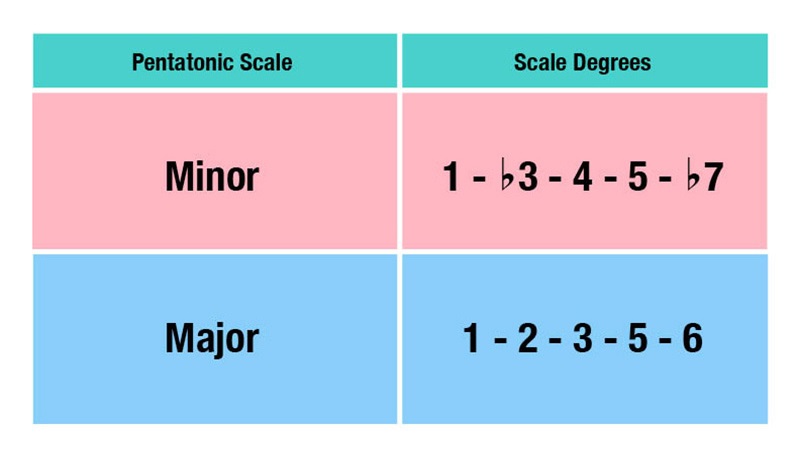
The Blues Scale
The “blues” scale, also called the “hexatonic” scale, contains six notes. You can look at this scale as a pentatonic scale with an added b5 scale degree. This interval, known as a tri-tone, is especially dark and brooding, so much so that it was for a time banned in “holy” music, and came to be known as the “Devil’s” interval.
The blues scale has an added element of chromaticism, coming from the three consecutive notes between the 4th, b5th, and perfect 5th.
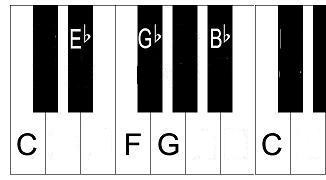
Need a Sec?
As you may have noticed, there is more than just one way to conceptualize or discuss musical scale and theory. In other words, same language, different words. We call the vocabulary we use to discuss music “nomenclature”. Some musicians choose to talk about scales as formulas of whole and half steps, others choose to talk about them as variations of one another. Some musicians understand scales as intervals, others feel more comfortable seeing written notes on the page. Neither of these is incorrect or better than another. You can feel which one is the most logical to you.
What Are Scale Modes?
Every scale has a set of “modes” which can be produced by beginning and ending that scale on a different note or degree. For example, if we begin and end the “C” major scale on the 2nd note in the scale “D”, we produce what is called the “Dorian” mode. A scale beginning on the 2nd degree of any major scale will take the same name. The mode contains all of the same notes as the parent “mode” or scale but is arranged in a different order.
The reason modes matter is that each one produces a varied and unique sound, which can be used in improvisation, composition, and production.
But why? If we’re playing the same exact notes, wouldn’t the result sound the exact same?
Not quite. By beginning the scale on a note other than the tonic, we end up re-ordering the sequence of whole and half steps between the notes. This shift in the distance between each note and its place in the scale changes the tonality and quality of the scale, thus creating an independent “mode”. Think of it as a different shade of the same color. Light blue can feel bright, playful, and refreshing, whilst dark navy blue can be dark, claustrophobic, or chilling.
The major and minor scales also have classical Greek “modal” names, “Ionian” and “Aeolian” respectively. These names can be used interchangeably with “major” and/or “minor”.
To create the “Dorian” mode, we take a major scale and lower the 3rd and 7th notes by one-half step each. To produce the Mixolydian scale, we take a major scale and lower the 7th note by one-half step.
In the chart below, you can see the formula for producing each mode in any key, from the perspective of the major scale:

Each mode falls into one of three categories, major, minor and diminished.
The “minor” sounding modes are Dorian, Phrygian, and Aeolian.
The “major” sounding modes are Ionian, Lydian, and Mixolydian.
The final mode, “Locrian” has a diminished quality.
Because chords come from scales, a unique chord corresponds to each mode. For example, the ii or “2” chord in a major key produces a minor chord (hence the “Dorian” mode also has a minor quality).
The “minor” quality modes all share the b3 and b7 scale degrees, while “major” modes have a natural 3rd and 6th scale degree.
In the context of jazz music, a mode can be isolated and used as a scale for improvisation over specific chords. This also applies to funk, RnB, soul, metal, and pop! Many jazz musicians use the Dorian mode to improvise over minor 7th chords, and the Mixolydian mode to improvise over dominant 7th chords. These mode and chord combinations aren’t just useful for improvisation, they are a great asset when writing melodies!
Using a mode to compose a melody can give your writing more variation and color.
Dorian example: Miles Davis - So What
Harmonic minor and melodic minor also have modes that can be constructed from each note in the scale. These are more advanced, but you can hear them in the tool as well!
How to Identify Scales by Ear
When it comes to identifying scales by ear, you’ll want to begin telling apart just the basic major and minor scales. Our Scale Spy game can help with this. Listen carefully for the 3rd note, and whether it is a major third or a minor third. To brush up on the sound of these individual intervals, try Departure.
From here, you can branch out and begin practicing other scales and modes. You can apply the same technique to determine whether the scale has a major or minor quality. From here, you can listen more closely to the other notes in the scale to determine which mode you are hearing.
Over time, you may even begin to associate a color or feeling with the sound of each particular mode or scale. Trust this connection of emotion and your ears. The rise and fall of each scale will carry a specific weight, which will help you begin telling them apart. When in doubt, you can always try to isolate specific notes to see if they are natural, raised, or lowered.
Another option is to isolate the note you’re unsure about, and try singing or playing it relative to the first note, the tonic. The distance between these two notes will help you determine the scale. For example, if you were to find that the distance between the 1st and 4th notes in the scale was a tri-tone or raised 4th, you would instantly recognize that scale as “Lydian”. (Only the Lydian mode contains this scale degree).
You’re now well on your way to not only understanding the beautiful mysteries of music but also opening new creative doors and outlets! This is just the beginning.
